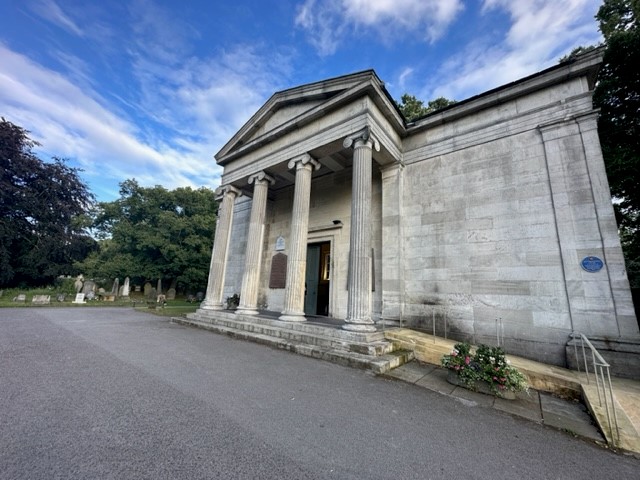
We were pleased to attend an education session put together by the British Institute of Funeral Directors who are the who are the accredited CPD Provider to the funeral profession. Until the visit we didn’t realise that the architect who designed the cemetery chapel also designed Huddersfield Railway Station and you can see the similarities in the design.
York Cemetery, located in the historic city of York in England, has a rich and fascinating history that spans over 175 years. Established in 1837, it is one of the oldest and most significant cemeteries in the region, serving as the final resting place for thousands of individuals from all walks of life.
The creation of York Cemetery was a response to the growing population of York and the need for a new burial ground. Prior to its establishment, the city’s burial sites were overcrowded, unhygienic, and unable to accommodate the increasing number of burials. As a result, a group of influential individuals, including architect George Basevi and railway engineer George Hudson, formed the York General Cemetery Company and purchased 24 acres of land on Cemetery Road to create a new cemetery.
The cemetery was designed in the Victorian garden cemetery style, with sweeping paths, beautifully landscaped gardens, and a variety of trees and plants. The layout was carefully planned to create a tranquil and serene environment, providing a place of solace and reflection for visitors.
York Cemetery quickly became a popular burial ground, attracting individuals from all social classes and religious backgrounds. It was a place of equal importance, where the rich and the poor, the influential and the ordinary, were laid to rest side by side. The cemetery also became a prominent site for memorialization, with elaborate monuments and gravestones erected to honour the deceased.
One of the notable features of York Cemetery is the presence of several war memorials and graves of soldiers who fought in various conflicts. The cemetery contains the graves of both British and Commonwealth soldiers from World War I and World War II, as well as other military conflicts. These memorials serve as a poignant reminder of the sacrifices made by those who fought for their country.
Over the years, York Cemetery has undergone various changes and renovations to ensure its preservation and continued use. In the early 20th century, a chapel was added to the cemetery, providing a space for funeral services and religious ceremonies. The chapel, with its stunning stained glass windows and intricate architectural details, remains an important part of the cemetery’s heritage.
Today, York Cemetery is not only a burial ground but also a cherished green space and a place of historical significance. It is open to the public, offering peaceful walks, guided tours, and educational programs to visitors. The cemetery also hosts events and activities throughout the year, including art exhibitions, poetry readings, and community gatherings, further engaging the local community and promoting appreciation for its historical and cultural value.
York Cemetery stands as a testament to the rich history and diverse heritage of the city of York. It provides a peaceful haven for remembrance, reflection, and contemplation, preserving the memory of those who came before us and honouring their contributions to the community. As a cherished landmark, it continues to play a vital role in the fabric of the city, serving as a place of solace and connection for generations to come.
